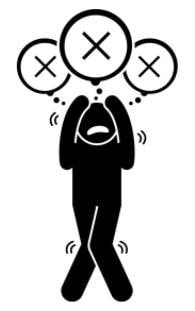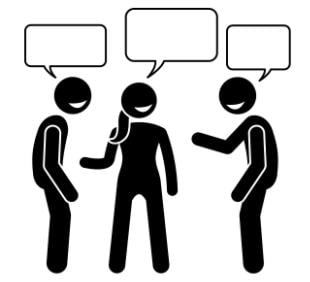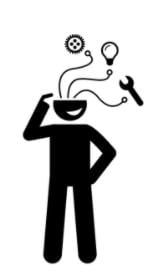“Communication is a skill that you can learn. It's like riding a bicycle or typing. If you're willing to work at it, you can rapidly improve the quality of every part of your life.”
- Brian Tracy (Motivational Speaker, Life Coach and Self Development Author)
Humans are social animals, and communication has always been an integral part of human life.
However, in today’s world, effective communication has become more valuable than ever before.
Why?
Because communication today is technology-driven where our social media profiles keep us connected to the rest of the world 24/7, facilitating seamless communication regardless of location or time zone.
Thus, we are interacting and communicating ever more frequently, which necessitates the need to master the art of communication.
This article talks about the importance of communication and lists effective tips on how to improve communication skills.
Let’s dig right in!
Impact of Social Anxiety on Communication

Modern day communication is a huge blessing. We can instantly connect with anyone, time, no matter where they are – thanks to new age technology and digital social communication platforms.
But let’s not ignore the other side of the picture:
As social media has become indispensable, cyberbullying has also increased exponentially. Moreover, the social reward system has changed; how many likes, comments, and followers you have decides your self-worth.
All of this has led to an increase in social anxiety disorders. Currently, around 40 million people in the world have some form of anxiety disorder.
Thus, more and more people have trouble communicating in social setups. This is a huge concern as good communication skills is a must-have trait today.
So, if you too struggle with good communication and feel conscious in social setups, go through this guide to help you.
What Is Good Communication?

Good communication means effective communication. It is a lot more than a mere exchange of words. It means when you feel like you are being understood, reciprocate by genuinely understanding the other person.
A lack of healthy communication can create voids that can become impossible to fill again, whether at work or home.
Poor communication can lead to:
-
Loss of morale
-
Self-consciousness
-
Bad interpersonal relationships
-
Misunderstandings (ruining an otherwise promising relationship)
Types Of Communication Skills

Communication has various dimensions to it; it is a complex amalgamation of all forms of human interaction.
Communication is classified into three broad categories:
1. Visual
When you send a message through visual elements; photos, art, posters, infographics, and other perceptible forms.

Visual communication is the most common and easily understood form because the human brain is hardwired for visual content. Thus, people are drawn towards visual elements.
The human brain processes visual communication 60,000 times faster.
Marketing experts use visual communication frequently to grab the attention of their audience because:
91% of buyers prefer visual content over traditional formats.
2. Non-Verbal
“Listen with your eyes as well as your ears.”
-
Graham Speechley
Nonverbal communication includes hand gestures, posture, eye contact, shoulder position, and other aspects of body language.

Often the non-verbal communication tends to be more meaningful than verbal communication. To understand the whole meaning of a conversation, one must pay keen attention to the nonverbal signs of the speaker.
Learn to read between the lines. Sometimes a person can say one thing and mean the exact opposite; you can only detect this from nonverbal gestures.
3. Verbal

Verbal communication is the most widely used form. It typically refers to face-to-face interactions, including phone calls or voicemails. It can be in a formal or informal setting.
What Are Some Must-Have Communication Skills?
1. Listen With Heart, Eyes, And Ears
Listening with your ears is not enough.
Only 7% of communication is contained in the words we use.
By focusing on the words alone, you can easily miss the message the other person is trying to convey. Being able to comprehend other people’s body language is a crucial part of communication skills.
Focus on non-verbal cues – body language (55%) and tone of voice (38%) – to fully communicate with the other person.
2. Stand In Their Shoes
You will never be able to communicate at a deeper level with another person unless you try to stand in their shoes.
We must see the situation from the speaker’s perspective before drawing any conclusion. Visualizing the scenario from other people’s lenses can significantly help you understand their point of view in a non-judgmental way.
3. Practice Mirroring
A mirror doesn’t judge; a mirror doesn’t advise; it simply reflects.
This must not be confused with mimicking, where exact words are repeated coldly.
Instead, in mirroring, you repeat the speaker’s meaning using your own words in a friendly and caring way. It lets the other person know that you are paying attention to their feelings and not zoning out.
Recipe For Great Communication

If we think about communication as a meal, what are the ingredients we need to have there? How do we put together a great meal?
Well, let’s think about it this way:
There are just five ingredients that HAVE to be present all the time for excellent communication to be possible.
| 1st Ingredient: Clarity | How do you make your point clear? You have to make sure the receiver understands what you are trying to convey. |
| 2nd Ingredient: Brevity | How do you get to the point quickly? Effective communication is quick. Don’t beat about the bush and waste time. Get to the main point straight away. |
| 3rd Ingredient: Context | How do you help people see how your point or message fits in for them? You have to make it relevant and make sense for them. |
| 4th Ingredient: Impact | How do you make it memorable? You have to stand out and communicate in a way that convinces the other person. |
| 5th Ingredient: Value | How do you make your message valuable? You have to give valuable information to the people consuming your message. |
Now, the next question is:
How much of each ingredient do we need?
Different meals are going to need the ingredients in different proportions. Different audiences will have different palates, and they are going to want different things out of their meal.
So, a savvy communicator will look at his ingredients and determine the proportions based on the audience.
Clarity |
When there is a lot of confusion and complexity around the issue |
| Brevity | When the time or attention span is short. |
| Context | When the audience is unfamiliar with the topic. |
| Impact | When you want to stand out, make it memorable and leave an impression. |
| Value | When there is a choice, skepticism, and competition. |
Communication Skills In The Workplace
Modern-day workplace demands are evolving rapidly. New ways and methods are introduced regularly.
However, one thing that seems to be a timeless demand of employers is that employees have a command over soft skills, including a solid ability to communicate effectively.
More than 70% of employers would prefer an employee with strong communication skills. [Source: Inc.]
The Changing Face of Workplace Communication
Companies understand that better workplace communication can lead to better problem-solving skills and improved decision-making, leading to increased efficiency and productivity.
According to a McKinsey report, well-communicated teams see productivity increase by 20-25%.
However, workplace communication goes beyond negotiating, following orders, giving presentations, and attending meetings.
The gig economy, Covid-19, and global digitization have changed the face of workplace communication. Zoom meetings, cloud exchange, and digital collaborators have become a norm.
Therefore, it is important to invest in workplace communication tools to improve overall workplace communication skills. For example, learn to use Wondershare PDFelement Cloud for cloud-based document management to improve document collaboration and sharing with coworkers.
Tips To Avoid Social Anxiety and Improve Communication Skills
This table will help you learn some great tips to improve your communication skills to become more confident in social situations:
Don’t Feel Self-Conscious |
Social Anxiety |
Improve Communication Skills |
| Focus on your positive traits | Become a social observer | Readout loud |
| Accept your flaws and don’t feel insecure | Push yourself to out and socialize more | Talk to yourself |
| Be confident in yourself | Make sure you read the situation right | Educate yourself on trending topics of discussion |
| Ask about others to shift the focus from you | Practice public speaking | Practice active listening |
| Make progress checks, not comparison | Control your breathing | Learn to read body language |
| Work on personality development | Consider talking to a therapist | Ask for feedback |
Conclusion
“Seek first to understand then seek to be understood.”
This is nature’s principle.
You have two ears and one mouth; use them accordingly. Communication is not just talking. Pick verbal cues, study behavior, understand the context and then present your point of view.
Following the tips mentioned in this article will help you avoid social anxiety by drastically improving your communication skills.

